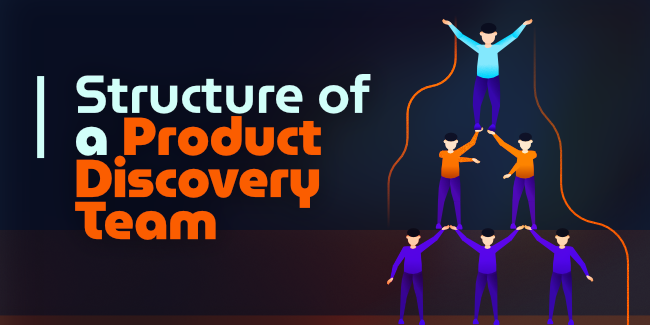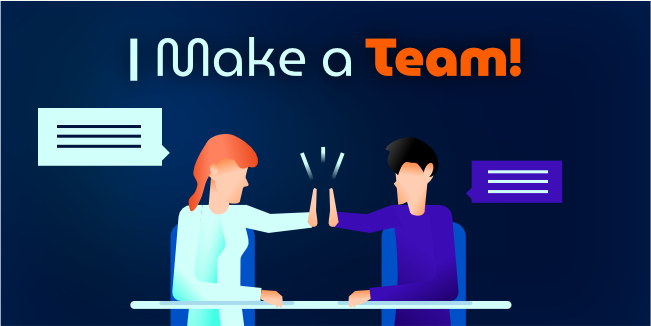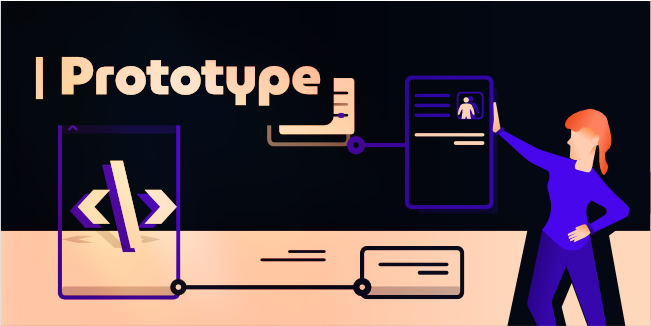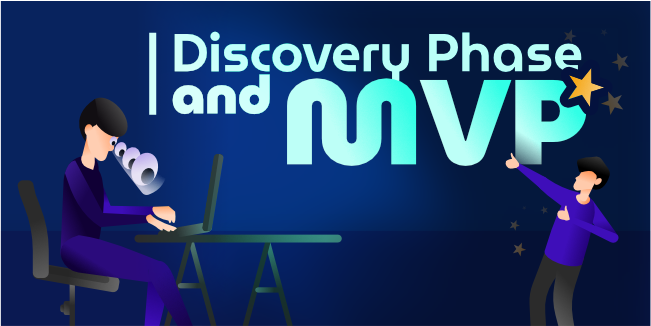discoveryphase
discovery
discoveryprocess
discoveryworkshop
What is the Product Discovery and Product Discovery Process?

It's not easy to develop a product. Whether a service or gadget, creating something from the ground up entails substantial research, commitment, time, and money. If a project is rushed or done incorrectly, the results will not be as desired.
On the other hand, product managers frequently fail to understand their consumers' requirements. As a result, they create just basic components rather than something valuable to their clients.
There is also another scenario. Expectations are realistic, but the process eventually breaks down when priorities shift, deadlines pass, or reallocate budgets.
It occurs due to insufficient understanding of the needs, which can only be achieved via product discovery.
This guide is the next, second stage of the journey in our study, which is the Discovery Workshop. This stage is at the core of the following parts. Hopefully, we will clear all of the confusion related to the product discovery. First, let's start with the definition itself.
Since you are reading this text, you want to learn about the right product discovery, so we have prepared a "Tips and Techniques for Effective Product Discovery Process" article presenting the best tips and tricks for an effective product discovery process.
What is the Product Discovery?
Simply stated, product discovery is the method of comprehending customers on a more comprehensive level to create items that meet their demands.
Product discovery is unquestionably the most challenging but crucial stage in your software development lifecycle. It's all about determining whether you're targeting the correct issue for the right audience at the right moment.
When it comes to the product discovery phase, each day may be a rollercoaster ride for your staff, with annoying lows and ecstatic highs. You will fall in love with your concept at one point, only to hate it the next.
However, the foundation for developing the appropriate product may only be laid if you stay user-centered and adaptable while conducting product research.
Teams that work on product development may focus either on the problem space or the solution space. They generally focus on the problem space in the product discovery phase, attempting to:
- Find out how their assumptions about the product concept will aid users in addressing their problems by testing them.
- Interview or conduct surveys to identify and document the current problems users have.
- Create unique user personas and explain how each one of their users will use the product.
- Spending the necessary effort to analyze and comprehend users' issues to develop effective remedies.
- Identify the product's most essential characteristics and define them in concise, clear language that customers can understand.
- Discuss the many risks of product development, including value, usability, and feasibility.
The right product discovery can't guarantee success. Still, it will set the foundation for the rest of the product development phases. As a result, before investing thousands of dollars in development, think about how you may better solve your client's problems and how it will make their lives easier.
When discussing Product Discovery, it is necessary to mention the Product Strategy. Not because it is the same, but because we want to know the critical difference, thanks to which we understand better what is going on and the purpose of discovering a product.
Product Strategy focuses on the bigger picture and helps us figure out which problems to address. On the other hand, Product Discovery is concerned with finding out how we will solve these issues.
It is worth stating that if you would like to entrust conducting the product discovery process to an experienced software development company, you should get to know our Discovery Workshops!
When should Product Discovery be used?
Product discovery is required when a team has no idea what it needs to develop, for whom, or why. It's possible to go off the rails with a product based on assumptions. You might fix an issue already been addressed (wasting time, money, and resources). But what circumstances lead to the need for a product discovery?
Suppose you want to sell your products or services in another country or to consumers with different demographics. In that case, you will most likely need to do some market research. It might require a study of the target audience, rivals, scope of the product, and opportunity size.
It's better to postpone starting development until you've figured out the client demographic, their requirements, and preferences if you have a concept for creating a new product in your head. The problem area of clients is studied by product discovery techniques, allowing you to create precisely what is required.
When developing a new feature for your product, it's critical to figure out what problem it'll address for your users and the overall product experience.
When businesses combine, their systems, procedures, and tools must be integrated. Searching for common issues might discover valuable and efficient solutions in assisting operations.
During the product discovery phase, product teams gain insight into user needs. They may have innovative ideas for answers that they can develop and test. The discovery stage may sometimes decide not to go ahead with the project if there isn't a need from the user.
Structure of a Product Discovery Team

Product discovery aids in the selection of a proper course, a common objective, and a vision when a project begins. As a result, it's critical for all stakeholders and team members to participate throughout the process. While the configuration of product discovery teams varies with the project's complexity and size, they generally include participants in the following functions:
- Project Manager - Who ensures that all team members know your goal. Hence, they're on track to managing plan meetings with end-users to obtain insights and documentation.
- Key-Stakeholder - This is the person who manages the budget and greenlights ideas.
- Business Analyst - Analyzes current market conditions and offers solutions.
- Solution Architect - To identify an approach to solve each problem statement.
- Tech Lead - To assess the technical feasibility of discovered technologies.
- UI/UX Expert - To concentrate on the design and usability of the product.
Keep in mind that product discovery is a team effort. The members of all departments, especially product, design, and development, have their ideas and bring a unique viewpoint to the table. While making product discovery, it's preferable not to confine designers to design, coders to code, and project managers to stakeholders. Allow them to do whatever they want in their imaginations and get involved with user issues. This way, you can regard product discovery as an actual team effort. Your team will feel linked at every step through the product development process.
Product Discovery Questions You Need to Answer
Because technology firms are delicate, there will always be plenty of competition to ensure that they remain relevant and useful for their customers. As a result, IT product organizations systematically use iterative development techniques to introduce new features. One of the best that kind of techniques is to answer specific questions. Here are some of them:
- Why will customers use your product?
- What value will it add to the users' lives?
- What value will the product add to your business?
- Does the product align with your business goals?
- Do we have a roadmap to build this product?
- How can we monetize it?
- What will be the KPIs to monitor the success?
- What is the total cost of development?
What is the Product Discovery Phases?
The product Discovery Process is not a straight-line process. It's essential to take a specific technique to move in the correct direction. Remember, while performing product discovery, you may always return to the preceding step and pursue a different approach. However, you must break down the entire procedure into separate phases to organize your thoughts and findings.
If you are interested in more specific knowledge, we created a series of workshops. The Discovery Workshop is the first stage in our troubleshooting process. We work with you to establish that a problem exists. We have the knowledge and experience to guide you through developing a product. We've learned how to assist you in this endeavor through our journey effectively. Following that, participants will have the opportunity to join the Design Workshop.
What is Discovery Phase?
The Discovery phase is a preparatory stage that precedes project initiation. It focuses on identifying your intended audience, problems, and requirements. During the Discovery Phases, you put your concept to the test by comparing it to real-world situations and users' expectations.
The main objective of the investigation stage is to resolve any concerns and verify your assumptions about the app, one way or another. You may then fine-tune your concept to produce a product that meets the needs and expectations of consumers based on the feedback and data gathered.
Make a Team

Typically, project managers organize a startup meeting, also known as a kickoff meeting. Though explicitly scheduled to discuss the need of the project and segregate what each of the stakeholders knows about the product. A meeting like this has a couple of primary purposes. It's critical to achieve a shared view among the key stakeholders or decision-makers of the product team to create a successful product.
First, you have to concentrate on developing a common understanding of the problem and settling on the means or ways to accomplish the purpose. But the main goal of the meeting is always establishing trust between various stakeholders and product teams.
The project's complexity determines the length of the kickoff meeting. While a few hours are sufficient for medium-complexity or specific projects, complex projects can take days to complete. Because so many stakeholders are involved in the Alignment phase, the Product Manager must keep product management aligned across all teams working on the project. Rather than attempting to find a workable solution, stakeholders and executives should concentrate on determining the true issues and comprehending the users impacted by them.
Research
As a Product Manager, you are highly familiar with your product's assumptions, so it's time to start conducting user research. The most typical approaches are customer interviews, focus groups, and validating any user experience insights from product analytics data.
We extensively discuss the internal and external problem statement in the team-making stage. The research phase entails going out and obtaining data to see whether our assumptions are correct, partially true, or completely untrue.
The software development company uses various tools and methods to collect user feedback in an organized way during the user research, allowing users to express their actual needs. Teams may use interviews, observation studies, surveys, and industry analysis to execute the research procedure for each product type.
The product discovery process should naturally extend your current product development approach. A roadmap can assist the entire product team stay on the same page and foster a shared understanding, resulting in improved outcomes.
The term research does not need to be explained, and it speaks for itself, but for the sake of clarity, these are the key types of research that you need to pay attention to:
Attitudinal Research — is used to understand or analyze the user's attitude. It is always helpful to receive customer feedback.
Behavioral Research — is used to understand the behavior and habits of the users.
Quantitative Research — collects the measurable data and gives you exact figures to analyze the situation.
Qualitative Research — collects the reasons behind these actions.
Quantitative research is excellent for determining how many and how much. In contrast, Qualitative research helps answer questions such as why or how to fix a specific problem. You may also use different research methods to see whether there is a difference between what people say and what they do with the end goal of finding out who your users are and what.
Ideation
The first two phases of the product discovery process assess the problem. Now it's time to start resolving it. Begin by generating as many ideas as you can by brainstorming and recording them. The ideation phase is the most exciting part for a good product team because it will never be short on product or feature suggestions.
However, don't just give everything you've obtained to the team all at once. Present the data in parts, with time for your stakeholders to absorb it and discuss it. It's time to prioritize ideas when they come from many angles.
Planting the same ideas in a similar cluster might help you better organize your ideation. Your team members may then vote for their favorite concept, and the one with the most votes should be selected.
At this point, you should concentrate on what characteristics will improve the usefulness of your product. As a result, you must have a clear vision and goals for your product after this phase.
After your staff has had an opportunity to examine and assess potential impacts and feasibility, they may decide which ones to prototype and present to customers.
Prototype

With a large pool of ideas, it's time to create several low-cost and simple variations of your product with particular characteristics. It's time to build a prototype or MVP (Minimum Viable Product) and get consumer input.
While the previous stage is essential in narrowing down the options worth developing, this doesn't necessarily mean they've been proven correct. Your users are the only people who can definitively show you whether an idea is valuable enough to progress to product delivery. Prototypes allow teams to show their concepts and bring them to life. You may test these prototypes in the group or with a small group of individuals from outside.
Remember, this is just a test. We aren't putting the end product together here. You'll need to provide solutions in the prototypes, evaluate whether they are appropriate, require refinement, or should be thrown out based on how the users feel about them. Our aim in this stage is to discover the greatest feasible solution for the previously discussed issues.
The most common blunder made by product teams is not involving developers and stakeholders in the prototyping process. It invites rework and extensive modifications, both time-consuming and expensive. You can't decide whether a specific design is feasible or not unless you have developers.
Idea Validation
During the product idea validation stage, you decide whether the product concept is worth investing your resources, time, and money in. While this step is closely related to the user research phase, you now have a viable solution in your hands.
It would help if you thought about validating your ideas and solutions from several different viewpoints and employing various methods to achieve a higher-conclusion. For example, you may use A/B testing, user interviews, and surveys to see how users would react to your product.
Keep an eye on the Signal Strength while trying different methods to verify your concept. It demonstrates how trustworthy your findings are and aids in making the best choice.
This phase is the most critical and engaging since the product's fate is on the line at this point. As the outcomes of your Idea Validation stage dictate what you do during the next phase, you should be aware how to do it well. In order to get that knowledge, head up to our "Idea Validation in Practice" article!
Refinement
As previously stated, the product discovery process is non-linear. Throughout the design process, you must repeatedly return and forth to produce a useful product that meets your company objectives.
The final stage in the product development process is Product Delivery, the next step. As a result, you must first have a collection of proven assumptions and concepts (ready to be used in creating and validating an MVP) before proceeding to the following stage.
Furthermore, most teams lack a comprehensive knowledge of all the steps above. At this stage, your product team's main responsibility is to arrange the data following corporate processes and standards. Break down the validated concepts into clusters, rank them according to importance, and devise development timelines for each cluster.
How Can Product Team Benefit From Product Discovery?
Customers profit from the product discovery stage, but product teams also benefit. Before diving into concept development, spend some time in this stage to stay focused on the customer's needs, prioritize more wisely, and boost revenue.
Meeting Customer Expectations
It has been written many times before, but it is worth repeating like a mantra because, after all, it is the overarching goal.
The objective of your staff is to design, create, listen to existing users, and provide goods and features that satisfy the demands of your clients. As a result, understanding these requirements will make your job much easier.
Being asked to develop an idea without an audience in mind is like being asked to write an essay without a title. It's easy to become overwhelmed by the number of options available. Many possibilities result in chronic decision paralysis, which means nothing will get done. Each concept might wind up going off on a different path if you don't have a clear direction throughout the development process.
Improve Prioritization Processes
It isn't easy to choose between a seemingly endless selection of product ideas. It's much worse if there isn't anything unique about one option from the next.
The only way to generate a list of necessary standards is to figure out what your users want. Using a checklist of criteria to assess each prospective venture increases the prioritization process. It improves your chances of choosing the proper (or best) concept.
Creating Company Value
Users are more likely to trust a firm that understands them than one that churns out items with no regard for their usefulness. A company that releases several innovative ideas in a short period will quickly establish itself as a market leader.
Creating products that satisfy an unmet requirement might help you grow your business. Furthermore, by ensuring that valuable resources aren't squandered pursuing the wrong concepts, an effective product discovery process may create value for the organization and save it money.
Creating a Roadmap with Product Discovery
A few words should also be said about creating the roadmap mentioned above.
Product discovery should not be an exception to your existing product development plan. Creating a roadmap aids in enforcing a unified viewpoint and improved outcomes. A product road map is essential since it also aids in the coordination of products by a product manager. It also gives stakeholders some framework to anticipate how the product will develop and evolve.
One of the advantages of a product road map is that it may assist bring internal stakeholders on board. The product roadmap may be used to help participants discuss options.
But the subject of roadmaps is so extensive that it deserves a separate commentary. You will find one in our "Product Roadmap" article. There, we break down the concept of a roadmap into prime factors, so you will likely find answers to your questions.
Discovery Phase and MVP

In one of the phases mentioned earlier, there was a task to create an MVP. It is quite an effort, so after moving into further phases, many people question: What about the MVP? We close the topic and do not come back to it?
No, this is a bad idea, and here's why.
When you develop an MVP, you start with the features that you believe are most essential to your clients. You'll immediately know if you stay on track with these objectives once it goes on the market. It's now all about what your users think at this point. Now it's time to get 'real data' after you've launched your MVP to measure whether or not your product was a success and how to improve it.
Product Discovery isn't a Temporary Task
Another repeated mantra, but as important as the previous ones. Customers' demands evolve. Thus, product discovery is not a one-time event. Suppose you want to stay on top of your industry's trends, satisfy your clients, and make the most of your investment. In that case, you must continue reexamining your ideal consumers and goods.
New ideas should address a particular problem to improve the likelihood of success. Rather than adding new features and hoping one stick, attempting to satisfy issues you know exist gives you a greater chance of contributing something valuable to your audience, which should improve their mood levels.
Customer Feedback
Encourage your consumers to communicate with your development team by making it simple for them to get in touch with you. It might be anything from conducting focus groups and allowing customer evaluations and testimonials to having polite and accessible customer care departments.
Respond
Don't let that crucial information waste once you've established communications channels with your target audience. If clients take the initiative to contact you, give a quick response. Show active listening and, if appropriate, release updates based on their feedback. Finally, a business is worthless without its consumers, and you're here to serve them. Don't squander the chance to learn how to do it.
Final Thoughts
Product discovery is simple to include into your routine once you grasp the fundamentals. Remember, it's a non-linear development that allows you to obtain essential insights and a deeper understanding of your clients.
The more you learn about their needs and issues, the better decisions you can make about new features and updates. Make discovery permanent during product development, and you'll be able to solve specific problems and deliver real value.
And because no one likes to spend a lot of time and work on satisfactory results, it is worth learning how to go through the entire product discovery process, drawing the conclusions that will be most needed and will bring the most results. Since you are reading this text, you want to learn about the right product discovery, so we have prepared another article presenting the best tips and tricks for an effective product discovery process.

This article is part of our Discovery Workshop series
What is Product Design? Now readingWhat is the Product Discovery and Product Discovery Process? Tips and Techniques for Effective Product Discovery Process Idea Validation in Practice Tips and Techniques for Effective Product Discovery Process Product Roadmap - how to write user stories and user flows? How to choose a tech stack for your project? How to create a project timeline? How to create a project budget? Functional Requirements Document for your Product What is a Prototype? Build your MVP (Minimum Viable Product) the right way - step by step guide by mDevelopers